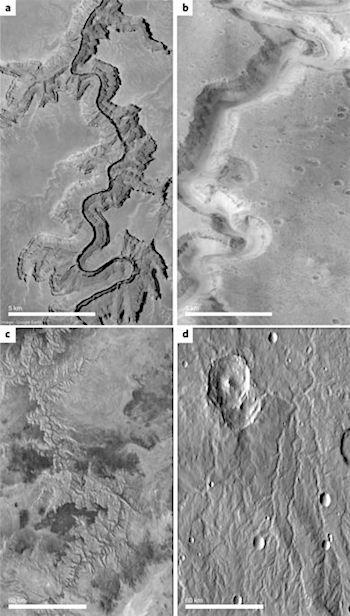 The climate of early Mars is a subject of debate. While it has been thought that Mars had a warm and wet climate, like Earth, other researchers suggested early Mars might have been largely glaciated.
The climate of early Mars is a subject of debate. While it has been thought that Mars had a warm and wet climate, like Earth, other researchers suggested early Mars might have been largely glaciated.
A recent study by Ramses Ramirez from the Earth-Life Science Institute (Tokyo Institute of Technology, Japan) and Robert Craddock from the National Air and Space Museum’s Center for Earth and Planetary Studies (Smithsonian Institution, USA) suggests that the early Martian surface may not have been dominated by ice, but instead it may have been modestly warm and prone to rain, with only small patches of ice. (…)
However, this idea has challenges. First, the amount of solar energy entering the atmosphere at the time was considered to be too low to support a warm and wet climate. Secondly, recent climate studies have argued that Mars’ ancient fluvial features can be accounted for with an icy climate, where widespread surfaces of ice promoted cooling by reflecting solar radiation. Occasional warming events would have triggered large amounts of ice-melt, and fluvial activity as a result. (…)
Recently, the authors’ study, published in Nature Geoscience, argues that volcanic activity on a relatively unglaciated planet could explain Mars’ fluvial features. Volcanic eruptions releasing CO2, H2, and CH4 may have contributed to the greenhouse effect, which in turn may have promoted warming, precipitation (including rain), and the flow of water that carved out the valleys and fluvial features… [More at links]








